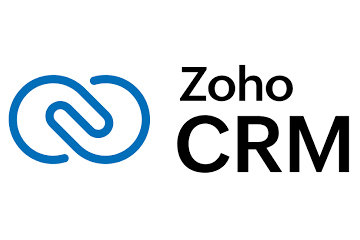Measuring CX is not a question of addressing one metric
Martechvibe spoke to Hazem El Zayat – Chief Experience Officer at Memac Ogilvy, about measuring CX, negative CX, and the challenges of delivering omnichannel service. Realise, admit, and start correcting those mistakes by identifying the right solutions, says Hazem El Zayat, a speaker at the CX NXT – the customer experience summit taking place in […]
Topics
What to Read Next
- Surfside Expands Commerce Media Solution to Include In-Store Inventory
- Salesforce Signs Definitive Agreement to Acquire Qualified
- MoEngage Secures Additional $180M in Series F Funding
- KNOREX Unveils White-Label Solutions to Power Live Commerce Advertising
- Insightly Launches AI-Powered Copilot to Streamline CRM Workflows

Martechvibe spoke to Hazem El Zayat – Chief Experience Officer at Memac Ogilvy, about measuring CX, negative CX, and the challenges of delivering omnichannel service.
Realise, admit, and start correcting those mistakes by identifying the right solutions, says Hazem El Zayat, a speaker at the CX NXT – the customer experience summit taking place in the Kingdom of Saudi Arabia on March 14-15, 2023.
During his session, Zayat will talk about how data can be operationalised to deliver maximum return on ad spend and marketing investment. He will also reflect on delivering personalisation at scale to maximise revenue without disrupting our current marketing efforts, reinvesting significantly in new technology and without starting from a clean sheet of paper.
Ahead of his session, Martechvibe spoke to Zayat about measuring CX, negative CX, and the challenges of delivering omnichannel service.
Excerpts from the interview
How can we measure CX and feedback on CX strategies?
Measuring CX is not a question of addressing one metric. It is a matter of measuring across all touchpoints, each against and relative to its intended objectives and KPIs and attributing performance accordingly. Having said that, the net measures of CX are metrics such as NPS, CSAT and CES. In addition, the real impact of CX is seen and measured through a combination of tangible and intangible values, which correlate to customer behaviour and emotion, respectively. This includes retention, which breaks into metrics such as retention rate, repurchase rate, and renew rate, and expansion value which breaks into metrics such as upgrade sales and ancillary sales.
How do you determine the impact of customers’ emotions on the ongoing CX strategies?
CX strategies should focus on measuring experiential value demonstrated in customer satisfaction, reviews and feedback; relational value demonstrated in referrals and NPS; and symbolic value demonstrated in social influence, user-generated content and events participation.
How can brands deal with negative CX?
The first step is to admit and realise it, and then start to identify solutions. The solution is to do little in one go or try to change the world. Very often, the small changes amount to a huge impact, and quantifying initiatives into low/high effort and time/investment quadrants can help you decide your quick wins. The critical thing to realise is that CX and negative CX is not resolved through customer service and its channels and that viewing the challenges and resolving them has to come from an outside-in perspective and not vice versa. In other words, from a customer lens.
What is the biggest challenge brands face when delivering omnichannel service?
There are several challenges in delivering omnichannel strategies and services. For instance, being driven by technical solutions and platforms rather than a CX strategy built around customer needs. A tool or platform is not a strategy; the right direction of travel is to understand customers’ needs and work backwards to the technology. The second challenge is attribution. With CX being an omnichannel strategy and with customers channel-hopping throughout a non-linear journey, multi-click attribution is crucial to deliver the right measurement metrics and optimise at the right step to maximise results.







































































































